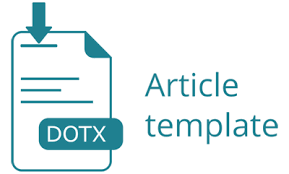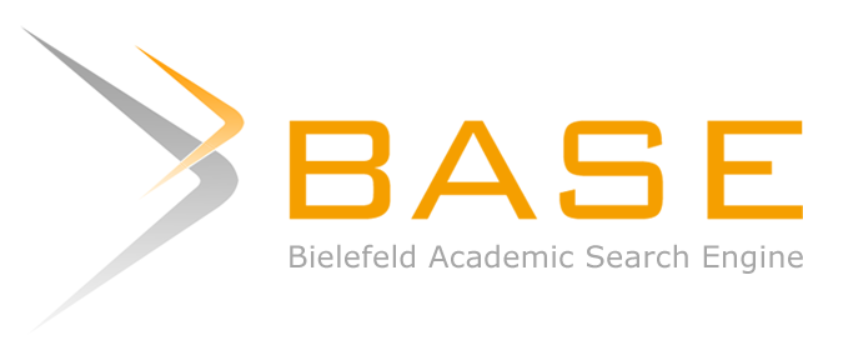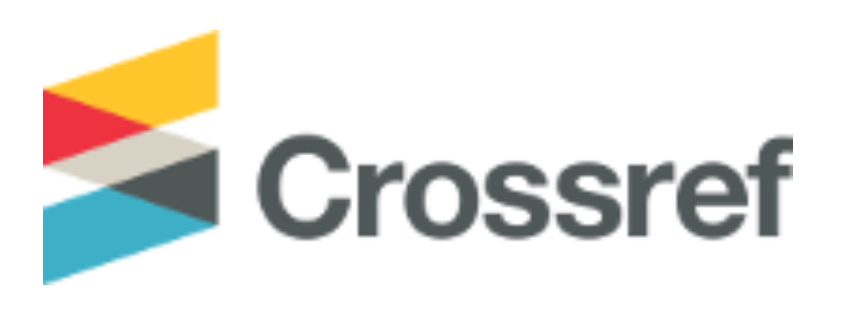Development of an Entrepreneurship Themed Animation Film of Kappaphycus Striatum Integrated Linear Programming Using the Plotagon Application
DOI:
https://doi.org/10.12928/joves.v7i2.9464Keywords:
entrepreneurship, animation film,, linear programming, plotagonAbstract
Entrepreneurship is the answer to the challenge of the need for creativity and innovation in solving problems or creating new opportunities, as applied in vocational-based curricula. Various vocational competencies and skills are trained to equip and prepare students to enter the dynamic world of work so that students can solve problems encountered around them through creative problem-solving. Therefore, in its teaching, real problem-solving exercises are needed with the help of learning media that can illustrate these real problems in detail with very realistic visuals. Thus, this study aims to develop a valid, practical, and effective animated film to visualize realistic problems of entrepreneurial practice to improve students' creative thinking skills. The research and development model used in this research is the descriptive ADDIE model, which shows systematic steps to produce an animated film with an entrepreneurship theme. The basis for selecting this development model is related to the special characteristics of the ADDIE model, namely developing products to relate the gap between educational research and educational practice, as well as emphasizing specific problems related to practical problems in teaching through applied research. Animated films with the theme of entrepreneurial practices can meet the criteria for product development feasibility in terms of validity, practicality, and effectiveness. The animated film media used has also proven to be a solution to the problems of students who have not been trained to think creatively in solving entrepreneurial practice problems so that students are more enthusiastic about learning and have meaningful learning experiences.
References
Aditiya, M. D. (2022). Students’ perspectives in writing narrative texts using the animated film. Ahmad Dahlan Journal of English Studies, 9(1), 27-36.
Andriyani & Suhendri (2019). Model Flipped Classroom Menggunakan Pendekatan Problem Based Learning. Jurnal Pemberdayaan: Publikasi Hasil Pengabdian Kepada Masyarakat, 3(3), 289-292.
Arifani, N.H., Sunardi, S., & Setiawan, S. (2015). Tingkat Berpikir Kreatif Matematika Siswa SMP Kelas VIII di SMP Negeri 6 Jember, SMP Al Furqan 1, SMP Negeri 1 Rambipuji. Kadikma, 6(2).
Arilaksmi, N.P., Susiwo & Sulandra, I.M. (2021). Kemampuan Berpikir Kreatif Mahasiswa Pendidikan Matematika dalam Memecahkan Masalah Open-Ended Trigonometri. Jurnal Ilmiah Pendidikan Matematika, 9(2), 46-58.
Arsantil, A., Zulaeha, I., Subiyantoro & Haryati, N. (2021). Tuntutan Kompetensi 4C Abad 21 dalam Pendidikan di Perguruan Tinggi untuk Menghadapi Era Society 5.0. in Prosiding Seminar Nasional Pascasarjana. 319-324.
Aschauer, W., Haim, K., & Weber, C. (2022). A contribution to scientific creativity: A validation study measuring divergent problem-solving ability. Creativity Research Journal, 34(2), 195-212.
Baig, U., Hussain, B. M., Meidute-Kavaliauskiene, I., & Davidavicius, S. (2022). RETRACTED: Digital Entrepreneurship: Future Research Directions and Opportunities for New Business Model. Sustainability, 14(9), 5004.
Bakari, S., El Weriemmi, M., & Mabrouki, M. (2022). The Impact of digitalization and trade openness on economic growth: new evidence from richest Asian countries. Journal of Research, Innovation and Technologies, 1(2), 7.
Björkdahl, J. (2020). Strategies for Digitalization in Manufacturing Firms. California Management Review,62(4), 17–36.
Chauhan, C., Parida, V., & Dhir, A. (2022). Linking circular economy and digitalisation technologies: A systematic literature review of past achievements and future promises. Technological Forecasting and Social Change, 177, 121508.
Dasilva, B.E., Ardiyati, T.K. & Suparno, S. (2019). Development of android-based interactive physics mobile learning media (IPMLM) with scaffolding learning approach to improve HOTS of high school students in Indonesia. Journal for the Education of Gifted Young Scientists, 7(3), 659-681.
Dhungana, S., & Thapa, R. (2023, December). Ways of Developing Creative Thinking and Reasoning of Students in Mathematics Learning. In Mathematics Education Forum Chitwan (Vol. 8, No. 1, pp. 57-75).
Diawati, P., Ausat, A. M. A., & Augustin, J. (2023). Creativity: how to develop an entrepreneurial attitude of creativity. Journal on Education, 5(4), 11116-11122.
Hadar, L.L. & Tirosh, M. (2019). Creativethinking in Mathematics Curriculum: An Analytic Framework. In Thinking Skill and Creativity pp. 33, 10058.
Hendriana, H. (2017). Hard Skills dan Soft Skill Matematika Siswa. Bandung: Refika Aditama.
Hu, R., Xiaohui, S. & Shieh, C.J. (2017). A Study on the Application of Creative Problem-Solving Teaching to Statistics Teaching. Eurasia Journal of Mathematics, Science and Technology Education, 13(7).
Kartikasari, I. A., Usodo, B. & Riyadi. (2022). The Effectiveness Open-Ended Learning and Creative Problem-Solving Models to Teach Creative Thinking Skills. Pegem Journal of Education and Instruction, 12(4), 29-38.
Kemdikbud. (2017). Panduan Implementasi Kecakapan Abad 21. Jakarta: Direktorat Pembinaan SMA. Dirjen Dikdasmen, Kemdikbud.
Klenner, N. F., Gemser, G., & Karpen, I. O. (2022). Entrepreneurial ways of designing and designerly ways of entrepreneuring: Exploring the relationship between design thinking and effectuation theory. Journal of Product Innovation Management, 39(1), 66-94.
Kraus, K., Kraus, N., Manzhura, O., Ishchenko, I., & Radzikhovska, Y. (2023). Digital transformation of business processes of enterprises on the way to becoming industry 5.0 in the gig economy. WSEAS Transactions on Business and Economics, 93(20), 1008-1029.
Kusumawati, V.G. & Andriyani. (2022). Kemampuan Berpikir Kreatif Siswa Tunarungu dalam Masalah Operasi Bilangan Bulat ditinjau dari Gaya Kognitif. In PRISMA: Prosiding Seminar Nasional Matematika. 202-213.
Kusumadewi, R. F., & Kusmaryono, I. (2022). Concept maps as dynamic tools to increase students’ understanding of knowledge and creative thinking. Premiere Educandum: Jurnal Pendidikan Dasar Dan Pembelajaran, 12(1), 12-25.
Larin, S. & Mayer, V. (2018). The Role of Computer Animation in Mathematics Teaching. Math. Informatics, 6(61), 542-552.
Mardiana, B. U., & Riyadi, A. A. (2023). Kurikulum Berbasis Vokasional Dalam Membentuk Jiwa Entrepreneurship Islami Peserta Didik. In Indonesian Proceedings and Annual Conference of Islamic Education (IPACIE) (Vol. 2, pp. 161-174).
Marhaeni, N.H, Andriyani & Rusmilah. (2021). A Andriyani Efektivitas LKPD Berbasis Problem Based Learning untuk Meningkatkan Kemampuan Pemecahan Masalah Matematis Siswa SMA Negeri 1 Imogiri. Jurnal Pendidikan Surya Edukasi (JPSE), 7(2), 85-96.
Nugroho, A. (2023). Exploring students' creative thinking in the use of representations in solving mathematical problems based on cognitive style. journal of Research and advances in mathematics education, 5, 202-217.
Rizky, R., Hakim, Z., Wibowo, A. H., Pratama, A. G., Sugiarto, A., & Setyowati, S. (2023). Program Peningkatan Kecakapan Hidup Berbasis Vocational Skill Untuk Membangun Jawa Wirausaha Mahasiswa Semester Akhir Mahasiswa Universitas Mathla'ul Anwar Banten. Jurnal Dharmabakti Nagri, 1(3), 133-139.
Safitri, W.Y., Retnawati, H. & Rofiki, I. (2020). Pengembangan Film Animasi Aritmetika Sosial Berbasis Ekonomi Syariah untuk Meningkatkan Minat Belajar Siswa MTs. Jurnal Riset Pendidikan Matematika, 7(2), 195-209.
Sarassanti, Y. & Mutazam. (2019). Analisis Kemampuan Berpikir Kreatif Matematis Mahasiwa Pendidikan Matematika pada Materi Bangun Ruang di STKIP Melawi. Dalam Seminar Nasional Pendidikan MIPA dan Teknologi (SNPMT II).
Subanji, S., & Nusantara, T. (2022). Mathematical Creative Model: Theory Framework and Application in Mathematics Learning Activities. In Active Learning-Research and Practice for STEAM and Social Sciences Education. IntechOpen.
Suripah & Sthephani, A. (2017). Kemampuan Berpikir Kreatif Matematis Mahasiswa dalam Menyelesaikan Akar Pangkat Persamaan Kompleks berdasarkan Tingkat Kemampuan Akademik. Pythagoras Jurnal Matematika Pendidikan Matematika, 12(2), 149-160.
Suryani, N., Setiawan, A. & Putria, A. (2020). Media Pembelajaran Inovatif dan Pengembangannya. Yogyakarta: Remaja Rosda Karya.
Tang, H., Yao, Q., Boadu, F., & Xie, Y. (2023). Distributed innovation, digital entrepreneurial opportunity, IT-enabled capabilities, and enterprises' digital innovation performance: a moderated mediating model. European Journal of Innovation Management, 26(4), 1106-1128.
Wahida, F & Andriyani. (2022). Effectiveness of Problem Based Learning Model in Improving Mathematical Connection Ability and Active Learning Opportunity Material. Formosa Journal of Sustainable Research (FJSR), 1(2), 97-116.
Xu, J., She, S., & Liu, W. (2022). Role of digitalization in environment, social and governance, and sustainability: Review-based study for implications. Frontiers in psychology, 13, 961057.
Zulkarnaen, Z., Suhirman, S., Hidayat, S., Prayogi, S., Sarnita, F., Widia, W., & Verawati, N. N. S. P. (2022). The Effect of Problem Based Learning Model on Students' Creative Thinking Ability. Jurnal Penelitian Pendidikan IPA, 8(1), 379-382.
Downloads
Published
Issue
Section
License
Copyright (c) 2024 Universitas Ahmad Dahlan

This work is licensed under a Creative Commons Attribution-ShareAlike 4.0 International License.
Authors who publish with Journal of Vocational Education Studies (JOVES) agree to the following terms: Authors retain the copyright and grant the Universitas Ahmad Dahlan right of first publication with the work simultaneously licensed under a Creative Commons Attribution License (CC BY-SA 4.0) that allows others to share (copy and redistribute the material in any medium or format) and adapt (remix, transform, and build upon the material) the work for any purpose, even commercially with an acknowledgement of the work's authorship and initial publication in Universitas Ahmad Dahlan. Authors are able to enter into separate, additional contractual arrangements for the non-exclusive distribution of the journal's published version of the work (e.g., post it to an institutional repository or publish it in a book), with an acknowledgement of its initial publication in Universitas Ahmad Dahlan. Authors are permitted and encouraged to post their work online (e.g., in institutional repositories or on their website) prior to and during the submission process, as it can lead to productive exchanges, as well as earlier and greater citation of published work (See The Effect of Open Access).









.png)



